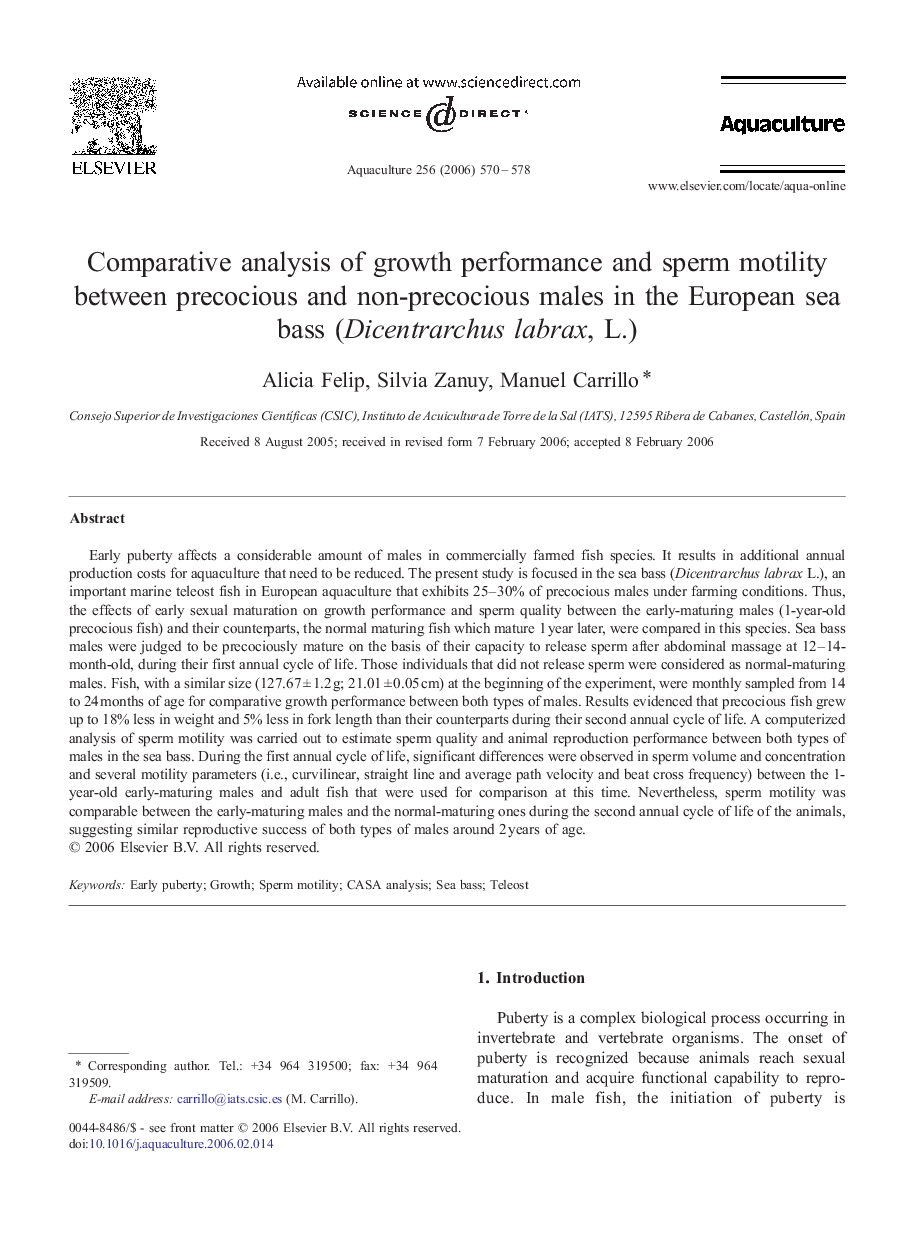| Article ID | Journal | Published Year | Pages | File Type |
|---|---|---|---|---|
| 2425957 | Aquaculture | 2006 | 9 Pages |
Early puberty affects a considerable amount of males in commercially farmed fish species. It results in additional annual production costs for aquaculture that need to be reduced. The present study is focused in the sea bass (Dicentrarchus labrax L.), an important marine teleost fish in European aquaculture that exhibits 25–30% of precocious males under farming conditions. Thus, the effects of early sexual maturation on growth performance and sperm quality between the early-maturing males (1-year-old precocious fish) and their counterparts, the normal maturing fish which mature 1 year later, were compared in this species. Sea bass males were judged to be precociously mature on the basis of their capacity to release sperm after abdominal massage at 12–14-month-old, during their first annual cycle of life. Those individuals that did not release sperm were considered as normal-maturing males. Fish, with a similar size (127.67 ± 1.2 g; 21.01 ± 0.05 cm) at the beginning of the experiment, were monthly sampled from 14 to 24 months of age for comparative growth performance between both types of males. Results evidenced that precocious fish grew up to 18% less in weight and 5% less in fork length than their counterparts during their second annual cycle of life. A computerized analysis of sperm motility was carried out to estimate sperm quality and animal reproduction performance between both types of males in the sea bass. During the first annual cycle of life, significant differences were observed in sperm volume and concentration and several motility parameters (i.e., curvilinear, straight line and average path velocity and beat cross frequency) between the 1-year-old early-maturing males and adult fish that were used for comparison at this time. Nevertheless, sperm motility was comparable between the early-maturing males and the normal-maturing ones during the second annual cycle of life of the animals, suggesting similar reproductive success of both types of males around 2 years of age.
